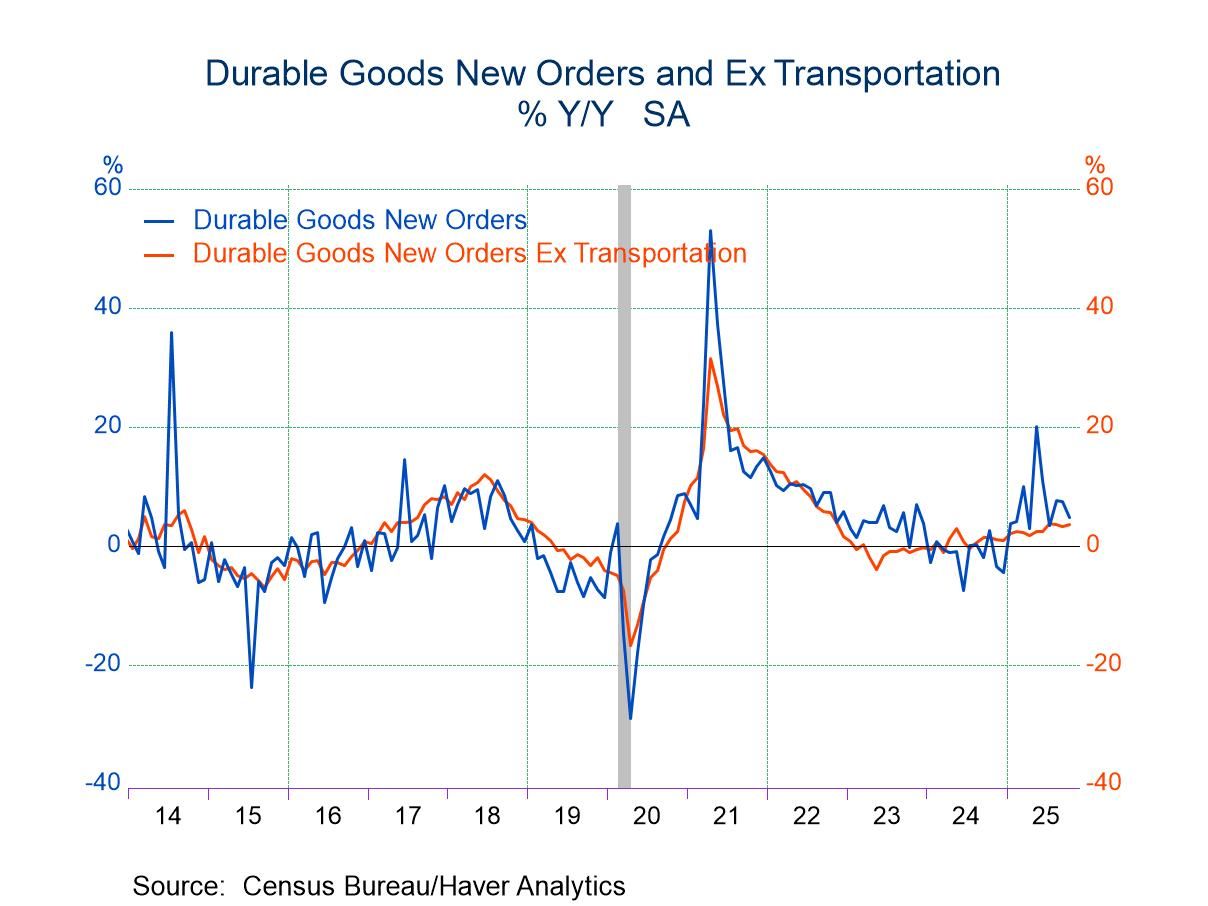 Global| Nov 17 2023
Global| Nov 17 2023Charts of the Week: Inflation Relief
by:Andrew Cates
|in:Economy in Brief
Summary
Growing conviction that central banks have concluded their tightening cycles has fueled a rally in stock and bond markets over the past two weeks. And that conviction was reinforced by some weaker-than-expected inflation data released over the past days (see chart 1). That view has been supported too by growing evidence to suggest that higher interest rates are taking a heavier toll on economic growth (see charts 2 and 3). In some ways, the US economy stands apart in this narrative, having maintained a surprisingly resilient pace of growth compared with other major economies in recent months. But cracks are arguably now appearing there too when we dig beneath the surface (chart 4). Japan’s economy has also drawn attention this week following a much weaker-than-expected GDP report for Q3 (see chart 5). Notwithstanding concerns about the economy - and the Bank of Japan’s potential response to above-target inflation - it has continued to attract considerable interest from equity investors over the past few months (see chart 6).
Global inflation Incoming data published over the past few weeks have revealed further evidence to suggest global inflationary pressures are easing. Headline inflation outcomes for October were weaker than expected in the US, UK, and euro area, for example. And while much of that weakness can be traced to lower energy prices, a detailed examination reveals that core inflation (which excludes energy prices) has been subsiding quite sharply as well (see chart 1).
Chart 1: Core CPI inflation in the US, euro area and UK

The growth consensus for 2024 High inflation and the monetary policy response to this have amplified pessimism among economic forecasters through the course of this year. The latest November Blue Chip consensus, for example, reveals that forecasters have become steadily more pessimistic about the outlook for most major developed and developing economies in 2024 as this year unfolded. However, there are notable exceptions. These include the United States and South Korea where GDP forecasts for next year are unchanged compared to where they stood at the start of this year. The outlooks for Mexico and Taiwan, moreover, have improved (chart 2).
Chart 2: Changes in consensus GDP forecasts for 2024

The growth consensus versus the interest rate consensus That the monetary policy response to high inflation has been a key factor in developed economies that explains this heightened pessimism is reinforced by chart 3 below. This chart depicts the change in the Blue Chip consensus for GDP growth in 2024, from January to November (as shown in Chart 2 above), plotted against the change in the consensus for short-term interest rates. On the whole, large increases in interest rate expectations have chimed with big negative revisions to growth expectations. The US is a noteworthy exception as growth expectations have held up well in the face of tighter-than-expected Fed policy. A relatively lax fiscal policy could be one reason for this. Conversely, the growing pessimism about Germany's economic outlook for next year appears disproportionate when compared to the expectations for the European Central Bank's monetary policy stance.
Chart 3: The Blue Chip consensus: negative GDP revisions versus positive interest rate revisions

US small company sector’s interest rate concerns Notwithstanding the seeming resilience of the US economy in recent months, evidence is starting to accumulate to indicate that tighter monetary policy is taking a toll. For instance, the latest NFIB survey of the small business sector revealed increasing concerns about the effects of high interest rates. This concern aligns with the survey's findings regarding the more elevated interest rates that companies are paying on their debt (chart 4).
Chart 4: US NFIB survey: Balances on financial problems and interest rate payments

Japan’s economy This week’s GDP data for Japan revealed that its economy shrank in Q3 at its fastest quarterly pace in two years. That weakness was caused by weaker consumption and export growth and a big decline in business investment. Looking at the contributions to Japan’s economic growth over the past 12 months reveals a similarly sobering message. Domestic demand has been pulling the economy onto a weaker keel, leaving net exports (and a weak yen) to do most of the heavy-lifting (chart 5). That backdrop, in turn, underscores the policy challenges that Japan’s policymakers confront in the immediate months ahead.
Chart 5: Contributions to the y/y change in Japan’s GDP growth

Equity fund flows in developed and emerging markets Financial flow data from EPFR, nevertheless, suggest that Japan has had some success in attracting interest from equity investors over the past few months. That stands in contrast to several developed economies (and European economies in particular) which have – on the whole – seen steady equity outflows. Measured with reference to the start of 2022, emerging markets have seen heavy inflows although that trend has begun to fade over the past couple of months (chart 6).
Chart 6: Cumulative equity fund flows to Japan, developed and emerging markets

Andrew Cates
AuthorMore in Author Profile »Andy Cates joined Haver Analytics as a Senior Economist in 2020. Andy has more than 25 years of experience forecasting the global economic outlook and in assessing the implications for policy settings and financial markets. He has held various senior positions in London in a number of Investment Banks including as Head of Developed Markets Economics at Nomura and as Chief Eurozone Economist at RBS. These followed a spell of 21 years as Senior International Economist at UBS, 5 of which were spent in Singapore. Prior to his time in financial services Andy was a UK economist at HM Treasury in London holding positions in the domestic forecasting and macroeconomic modelling units. He has a BA in Economics from the University of York and an MSc in Economics and Econometrics from the University of Southampton.






